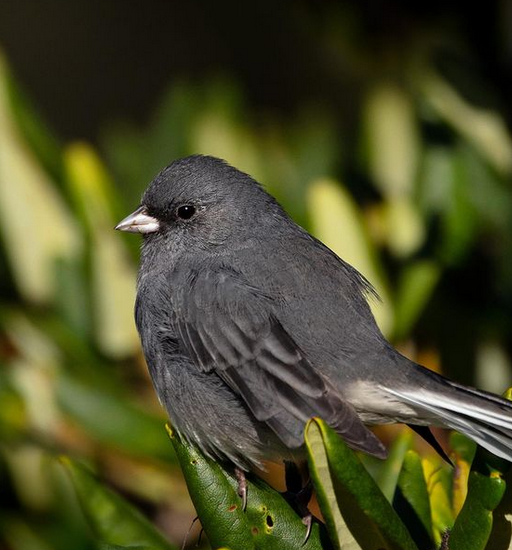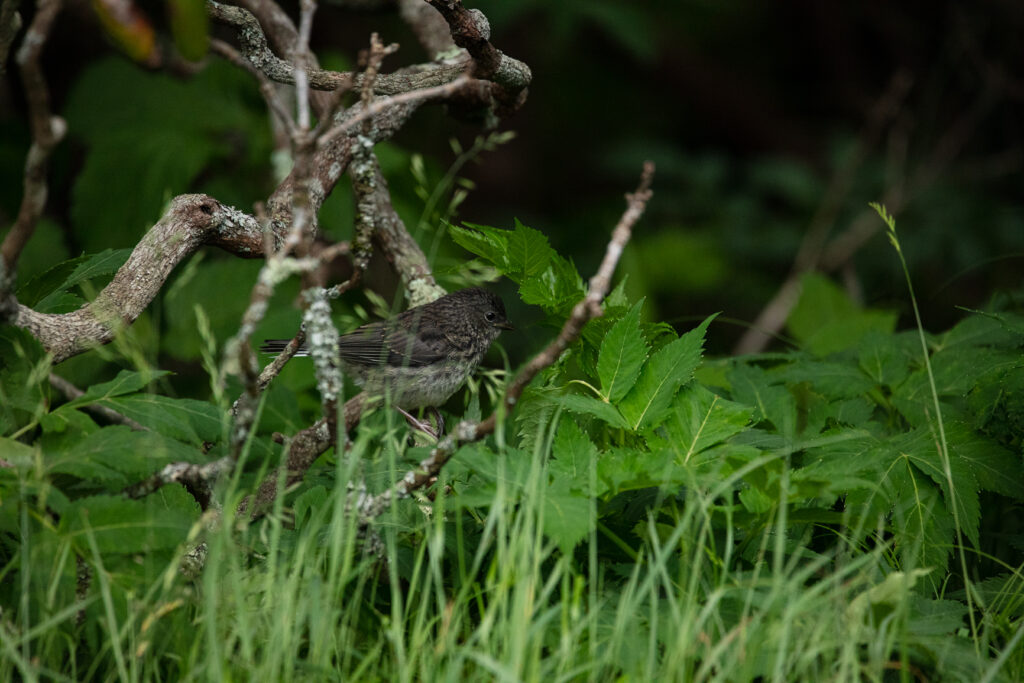With the arrival of winter, I’m always happy when the dark-eyed Juncos show up to my yard in central North Carolina.
I spotted this one back in September along the Blue Ridge Parkway. Normally Juncos are a wintertime bird here in the Tarheel state, but there are quite a few of them that call the Blue Ridge Mountains home all year round.

Did you know that Dark-eyed Juncos tend to return to the same exact spot every winter?
This means that you have likely will see many of the same birds at your feeder this winter that you’ve had visiting in previous years.
Offer millet & black oil sunflower seeds and you’ll likely see a ton of them in your own yard too!
Interestingly, female juncos tend to migrate earlier and fly farther south than the males who prefer to spend their winter in locations further to the north.
It is believed that this shortens the male birds travel time/distance required for their spring migration, thus giving them the advantage of arriving first to stake out their territory on prime breeding grounds in Canada and Alaska.
What about you?
Have you seen Dark eyed Juncos in your yard yet this year?
Leave your answer in the comments below 🙂
*By the way, many of you have asked what camera I use to take my shots. I’m on a full frame Canon 5Ds. With 50 MP of resolution and great mid range tonal capture, it’s a real beast and probably my favorite camera I’ve ever owned.
All those mega pixels allow me to crop really tight if my lens won’t give me the reach I’m looking for and the 5DS’s incredible resolution processing results are pure magic, even when pixel peeping lol!
Want to see what I mean?
Check out the second image in this post below which is the original of the first photo featured here.
Freak’n awwwwwesome!

Photo by @sally_siko of @birdwatching_nc on the fabulous full frame @canonusa
#5Ds








